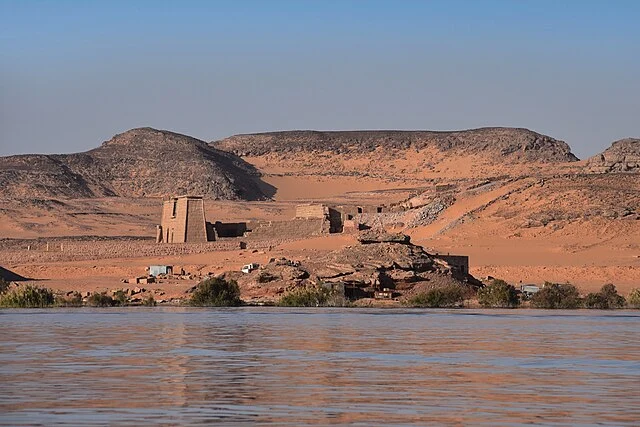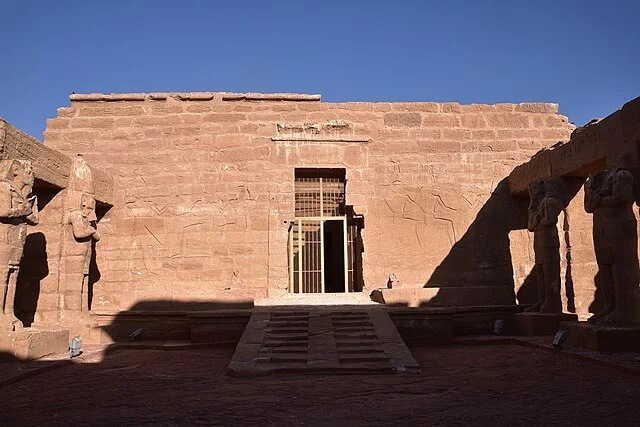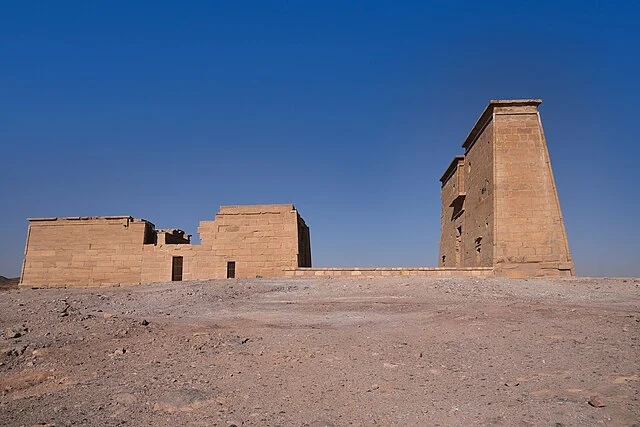New Wadi es-Sebua, located in southern Egypt, is a significant archaeological site. It consists of temples that were relocated during the 1960s to protect them from the rising waters of Lake Nasser, created by the construction of the Aswan High Dam. The site lies near the modern village of Wadi es-Sebua, which means “Valley of the Lions” in Arabic, due to the sphinx statues that originally lined the temple avenue.
Get your dose of History via Email
Relocation Effort

The temples at Wadi es-Sebua were built during the reign of Pharaoh Ramses II (1279–1213 BC) as part of a broader effort to consolidate Egyptian control over Nubia. To save these temples from submersion, international teams relocated them to higher ground in the 1960s. The relocation involved cutting the temples into large blocks, which were then reassembled at the new site. This effort was part of a broader campaign by UNESCO to save Nubian monuments threatened by the dam’s construction.
Temples at New Wadi es-Sebua

The primary temple at New Wadi es-Sebua was originally dedicated to the gods Amun and Ra-Horakhty and to the deified Ramses II. The temple’s layout follows the traditional Egyptian design, with a pylon entrance leading to a series of halls and sanctuaries. Statues of Ramses II, sphinxes, and other carvings adorn the temple, reflecting the pharaoh’s power and divinity.
Another important structure at the site is the Temple of Dakka, dedicated to the god Thoth. Like the main temple, the Temple of Dakka was moved as part of the UNESCO effort. It shares architectural similarities with the other Nubian temples built during this period. Lastly, Temple of Maharraqa is also located at New Wadi es-Sebua.
Significance and Preservation Of New Wadi es-Sebua
New Wadi es-Sebua holds great historical significance due to its association with Ramses II and the Egyptian empire’s expansion into Nubia. The temples provide insights into the religious practices, art, and architecture of ancient Egypt during the New Kingdom period.
Today, New Wadi es-Sebua is preserved as part of Egypt’s rich cultural heritage. It remains a testament to the international collaboration that saved these ancient monuments from destruction. The site attracts researchers, historians, and tourists who seek to understand the legacy of ancient Egypt in Nubia.
Conclusion
New Wadi es-Sebua serves as a crucial link to Egypt’s past. The site demonstrates the complexity and ambition of Ramses II’s reign, as well as the efforts made to preserve ancient history for future generations. It stands as an enduring symbol of the collaboration between nations to protect our shared cultural heritage.
Source:

